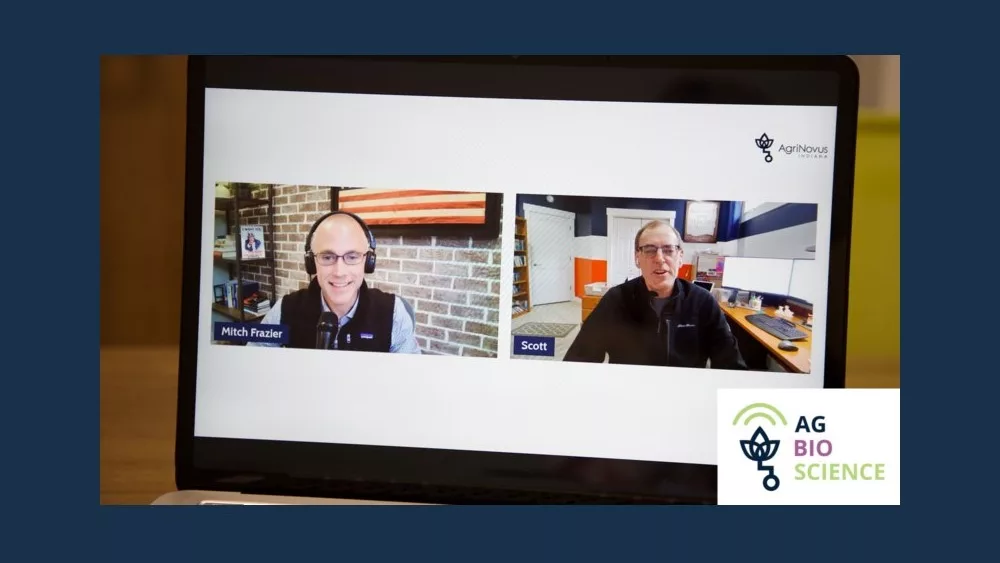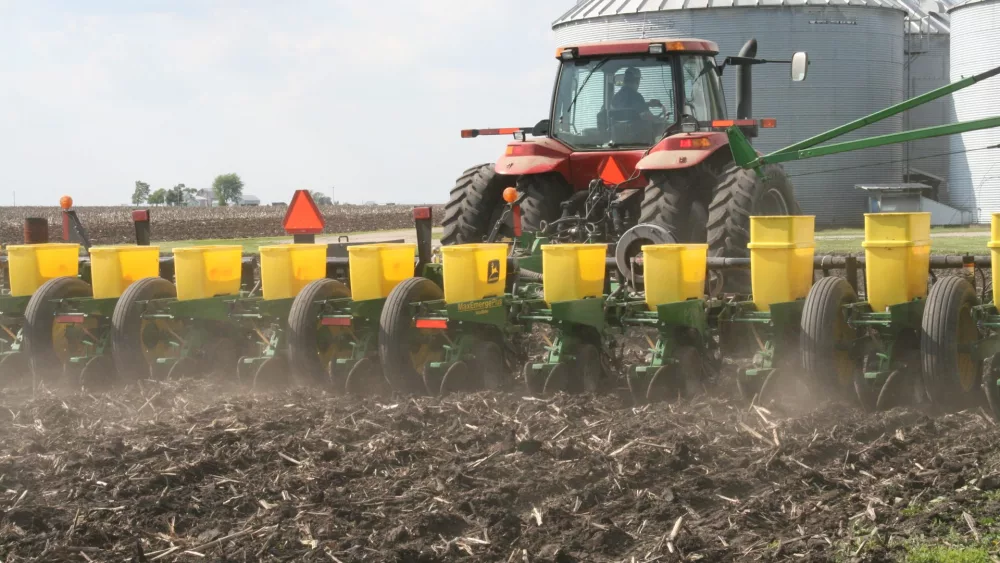 The farmer-leaders of the United Soybean Board (USB) convened for their summer board meeting last week in Kalamazoo, Michigan, to approve a 2023 fiscal year budget of $123M for program work, starting Oct. 1, 2022.
The farmer-leaders of the United Soybean Board (USB) convened for their summer board meeting last week in Kalamazoo, Michigan, to approve a 2023 fiscal year budget of $123M for program work, starting Oct. 1, 2022.
“I look at it as the checkoff dollars that we’re spending from USB soybean farmers is taking $1 out of one pocket and returning $10 into the other,” says Kendallville, IN farmer Tom Griffiths, one of those USB directors in Kalamazoo last week. He says there are many projects in the budget that will help “move the pile” for American soybeans.
Griffiths’ working group focused on Supply: Health and Nutrition and there’s one project he’s particularly excited about that focuses research on biostimulants and microbes.
“This is all something that really hasn’t had a lot of research done in that area. We spent a little over $2 million on biostimulants and microbes. This is something that we’re hoping that as we move forward it will reduce some of the farmer inputs from a fertilizer standpoint.”
Griffiths is also excited about the projects revolving around renewable fuels, especially the sustainable aviation fuel.
“That’s going to be a huge driver for the soy oil, but if we’re going to move that much oil, we’ve got to have a demand for the meal that’s going to come out of that.”
Spanning eight portfolios, these investments in research, education and promotion add value to U.S. soybeans with the goal to build resilience, differentiation and reputation. This portfolio ladders up to USB’s new vision of delivering sustainable soy solutions to every life, every day.
Investment portfolios will continue the board’s work of creating consistent, long-term domestic and global market opportunities to further demand for U.S.-grown soybeans.
“Our thinking, planning and work as a board has become a much more deliberate and idea-driven process, challenging our board members to think big. Each portfolio is farmer-directed and works together to create demand for U.S. soybeans across the entire global soy value chain,” said Ralph Lott, USB Chair and farmer from New York. “We’ve successfully shifted from project takers to portfolio makers, and the end result is more strategic thinking. The preference for U.S. soybeans grows while farmers continue to see strong ROI on their checkoff dollars.”
Investment portfolios are approved by the full board and consist of programs across Supply and Demand Action Teams driven by the three priority areas of 1) Innovation & Technology, 2) Health & Nutrition, and 3) Infrastructure & Connectivity. FY23 programs impact everything from improving production on the farm to expanding markets across animal agriculture, soyfoods and providing a renewable alternative for biofuels and nonfood uses. Some examples of these soy checkoff investments aim to:
- Enhance soybean cropping system improvement that creates opportunities to reward and support farmers and other value chain participants, including the growth of high oleic soybean production to meet demand for specialty soybeans while providing a farmer premium.
- Further soy’s role in the evolving clean energy movement, with investments that support using soybean oil as a feedstock for biodiesel and renewable diesel in marine, rail and on-road applications. Biofuels are the largest industrial use for soybean oil and require investments to reach maximum potential.
- Develop nutrition and health research that distinguishes U.S. soybean meal’s value drivers (amino acids and energy), supports animal health, builds evidence that discerns U.S. soybean meal from the competition and strengthens key industry partnerships.
- Encourage commodity partnerships to improve soil health, collaborating with National Corn Growers Association and National Pork Board to implement cover crops on 30 million acres of soybeans and corn by 2030, focused on meeting sustainability goals while improving farmer productivity.
- Grow exports in more than 80 countries through the U.S. Soybean Export Council’s strategy to differentiate U.S. soybeans in the global marketplace. USB also partners with the U.S. Meat Export Federation and the USA Poultry and Egg Export Council to promote exports of soy-fed meat, as well as the American Soybean Association’s World Initiative for Soy in Human Health to create long-term demand for U.S. soybeans in developing and emerging markets and improve food security.
- Improve best management practices through partnerships that lead to faster, real-time dissemination of pest and disease research findings, such as developing a pesticide and fungicide calculation tool that helps farmers determine regional application thresholds to maximize yield potential.
- Increase focus on fertilizers and biologicals that support farmers and farming system resilience in an uncertain crop input market environment.
- Reach key audiences to elevate the reputation of U.S. soybeans, expanding trust with consumers and helping them develop a deeper understanding and appreciation for how U.S. soybean farmers can deliver sustainable solutions for more than 1,000 renewable products on the market.
Hear the full HAT interview with USB Director Tom Griffiths below.




